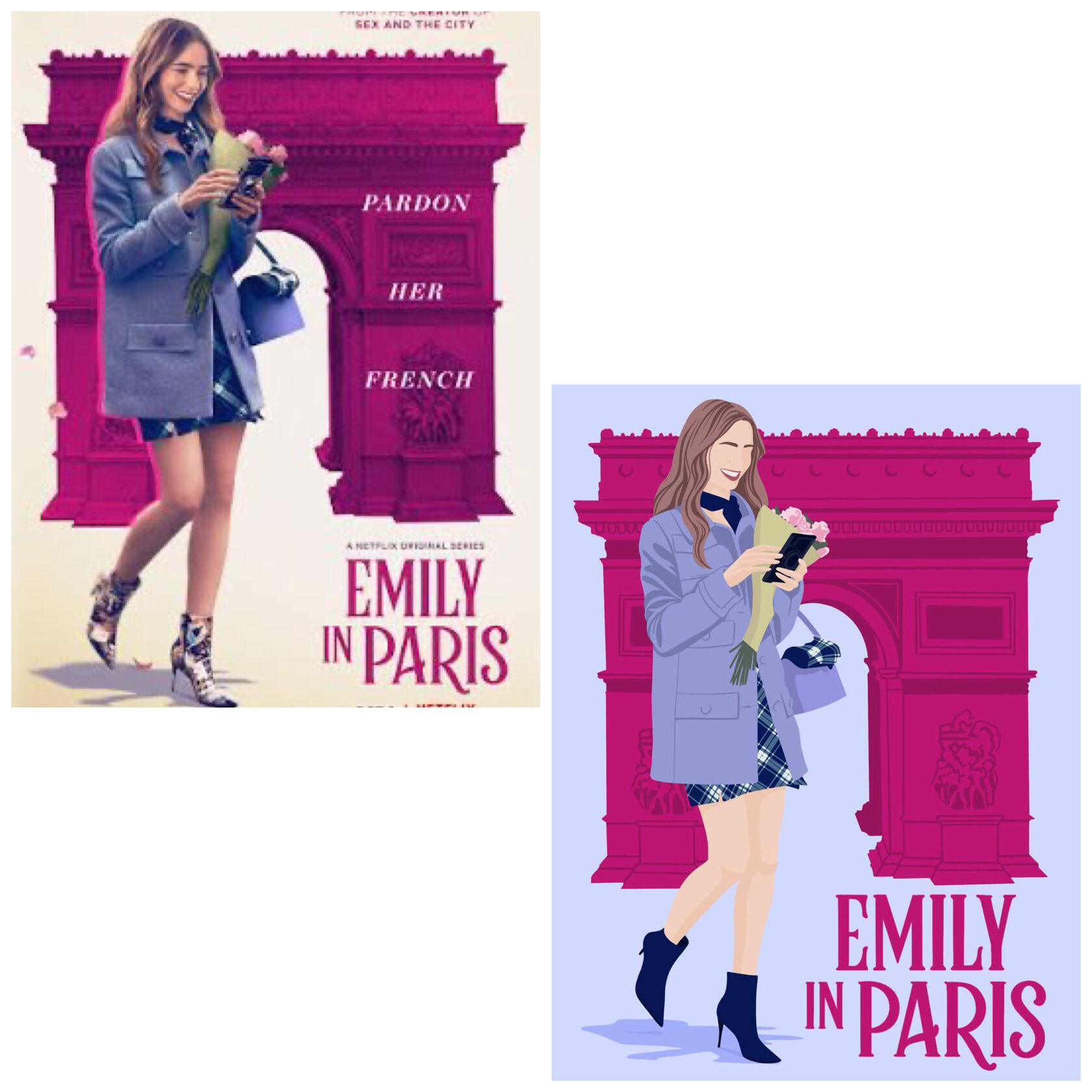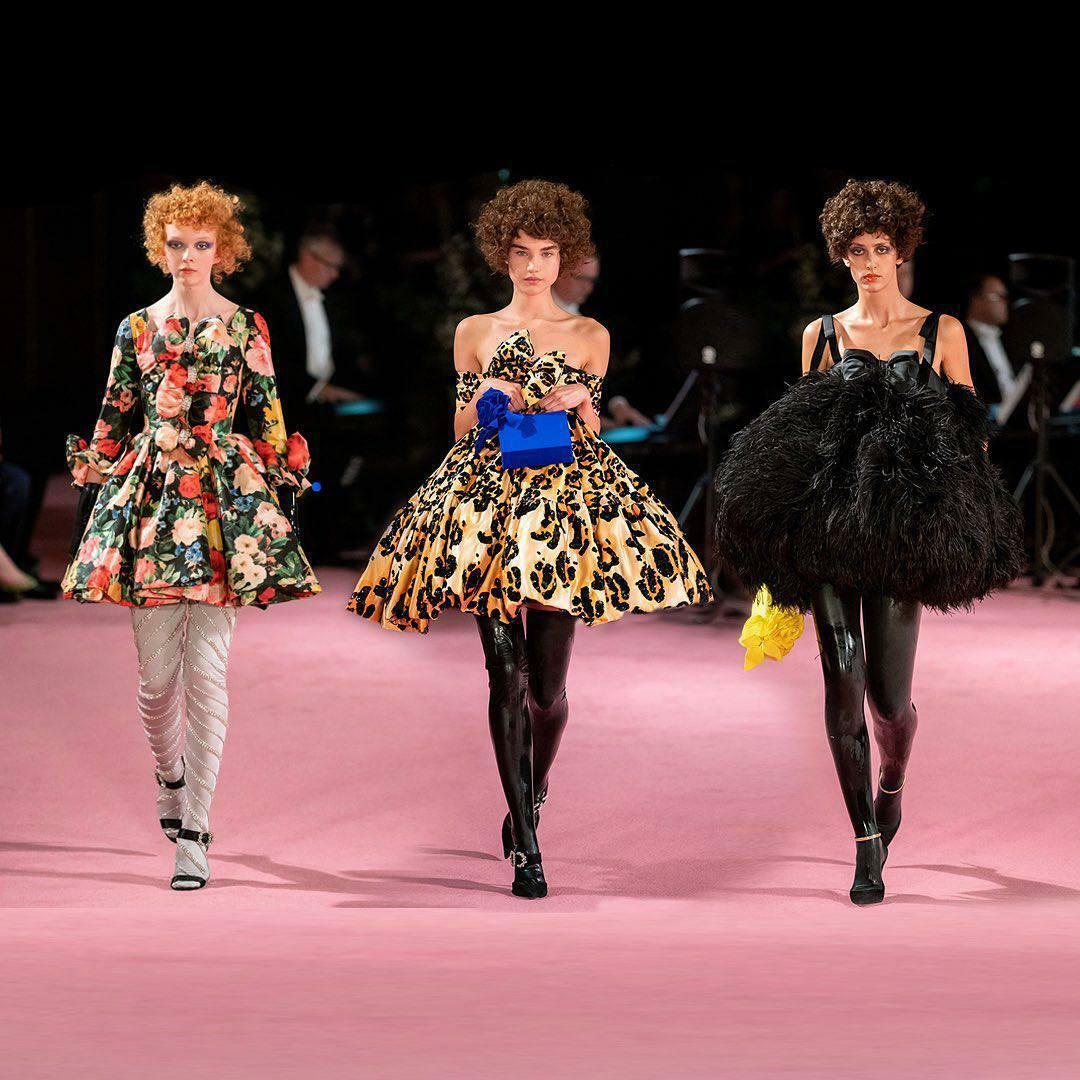
Get the first 30 pages of our book "The Art of Fashion Illustration"
We want to share with you the first 30 pages of our book so you can dive into the world of art. This Fashion Illustration book is a must-have for anyone interested in fashion design or illustration...
WHAT ARE REFERENCES
...and how to use them correctly

In essence, a drawing reference is an auxiliary image, a photo, which the artist/illustrator relies on when creating his work. There may be several, or one particular one.
If you look back at our daily life, you will see that it is actually full of references. When you are told a story and describe a place, you imagine it based on your experience. Perhaps you have been to this place, seen in a photograph, in a picture, or read a description of this place in a book or magazine. Imagination will draw it and add details. But if you decide to draw this place, your imagination will play a trick on you when drawing “from memory” - even experienced artists can incorrectly distort the proportions and shape of objects, not calculate them in space or choose the wrong color. No one suggests that you give up your imagination, it is more important here to create your own fantasies based on real objects. To draw an analogy: Salvador Dali created his paintings based on dreams, but the objects he painted were real, at least in part. So he often painted his wife from life, a landscape next to his house. From this, we can conclude that in the absence of nature, the reference for the artist is a necessary and integral element of the work, like the material with which he draws and the drawing tool.
If you look back at our daily life, you will see that it is actually full of references. When you are told a story and describe a place, you imagine it based on your experience. Perhaps you have been to this place, seen in a photograph, in a picture, or read a description of this place in a book or magazine. Imagination will draw it and add details. But if you decide to draw this place, your imagination will play a trick on you when drawing “from memory” - even experienced artists can incorrectly distort the proportions and shape of objects, not calculate them in space or choose the wrong color. No one suggests that you give up your imagination, it is more important here to create your own fantasies based on real objects. To draw an analogy: Salvador Dali created his paintings based on dreams, but the objects he painted were real, at least in part. So he often painted his wife from life, a landscape next to his house. From this, we can conclude that in the absence of nature, the reference for the artist is a necessary and integral element of the work, like the material with which he draws and the drawing tool.
In essence, a drawing reference is an auxiliary image, a photo, which the artist/illustrator relies on when creating his work. There may be several, or one particular one.
If you look back at our daily life, you will see that it is actually full of references. When you are told a story and describe a place, you imagine it based on your experience. Perhaps you have been to this place, seen in a photograph, in a picture, or read a description about this place in a book or magazine. Imagination will draw it and add details. But if you decide to draw this place, your imagination will play a trick on you when drawing “from memory” - even experienced artists can incorrectly distort the proportions and shape of objects, not calculate them in space or choose the wrong color. No one suggests that you give up your imagination, it is more important here to create your own fantasies based on real objects. To draw an analogy: Salvador Dali created his paintings based on dreams, but the objects he painted were real, at least in part. So he often painted his wife from life, a landscape next to his house. From this we can conclude that in the absence of nature, the reference for the artist is a necessary and integral element of the work, like the material with which he draws and the drawing tool.
If you look back at our daily life, you will see that it is actually full of references. When you are told a story and describe a place, you imagine it based on your experience. Perhaps you have been to this place, seen in a photograph, in a picture, or read a description about this place in a book or magazine. Imagination will draw it and add details. But if you decide to draw this place, your imagination will play a trick on you when drawing “from memory” - even experienced artists can incorrectly distort the proportions and shape of objects, not calculate them in space or choose the wrong color. No one suggests that you give up your imagination, it is more important here to create your own fantasies based on real objects. To draw an analogy: Salvador Dali created his paintings based on dreams, but the objects he painted were real, at least in part. So he often painted his wife from life, a landscape next to his house. From this we can conclude that in the absence of nature, the reference for the artist is a necessary and integral element of the work, like the material with which he draws and the drawing tool.
WHAT CAN BE A REFERENCE?
- Full character image
- Parts and features of the object
- Angle, pose, clothing of the character
- Text description of objects
- Collage
- Mood board
- Size Description

HOW TO WORK WITH REFERENCE
Starting work on an illustration, we have a specific goal.
Even if it's just inspiration, you are developing your own skills and these skills are specific, since the reference determines the choice of material and styling possibilities. For example, reference for watercolor is far from the same as reference for graphic sketches. For watercolor, you might choose something more multicolored, harmonious in color combinations, with interesting lighting. In a word, what can be well beaten with paints in combination with water. For graphics, it makes sense to choose even a black and white reference, which simplifies the transfer of volume. But speaking now about watercolors and graphics, I mean photos.
It is possible that you were inspired by the work of another artist. What in this case? Will it be your job? Yes. Can it be used for commercial purposes? No.
Since you are using someone else's intellectual work. The technique and/or the theme of the illustration that you copied was created by the artist through his own creative searches, it took not only the time of the work itself, but also the whole path that led to it. Of course, putting yourself in the place of this author, you will understand how unpleasant this is. Perhaps you yourself found yourself in a situation where your work was “stolen”.
Thus, copying someone else's work of art is your experience, training, test of technique, but not your property.
If you are going to post this copy on social networks, be sure to tag the author and indicate in the text that the work is a copy and does not aim to sell it.
Even if it's just inspiration, you are developing your own skills and these skills are specific, since the reference determines the choice of material and styling possibilities. For example, reference for watercolor is far from the same as reference for graphic sketches. For watercolor, you might choose something more multicolored, harmonious in color combinations, with interesting lighting. In a word, what can be well beaten with paints in combination with water. For graphics, it makes sense to choose even a black and white reference, which simplifies the transfer of volume. But speaking now about watercolors and graphics, I mean photos.
It is possible that you were inspired by the work of another artist. What in this case? Will it be your job? Yes. Can it be used for commercial purposes? No.
Since you are using someone else's intellectual work. The technique and/or the theme of the illustration that you copied was created by the artist through his own creative searches, it took not only the time of the work itself, but also the whole path that led to it. Of course, putting yourself in the place of this author, you will understand how unpleasant this is. Perhaps you yourself found yourself in a situation where your work was “stolen”.
Thus, copying someone else's work of art is your experience, training, test of technique, but not your property.
If you are going to post this copy on social networks, be sure to tag the author and indicate in the text that the work is a copy and does not aim to sell it.
Starting work on an illustration, we have a specific goal.
Even if it's just inspiration, you are developing your own skills and these skills are specific, since the reference determines the choice of material and styling possibilities. For example, the reference for watercolor is far from the same as the reference for graphic sketches. For watercolor, you might choose something more multicolored, harmonious in color combinations, with interesting lighting. In a word, what can be well beaten with paints in combination with water? For graphics, it makes sense to choose even a black-and-white reference, which simplifies the transfer of volume. But speaking now about watercolors and graphics, I mean photos.
It is possible that you were inspired by the work of another artist. What in this case? Will it be your job? Yes. Can it be used for commercial purposes? No.
Since you are using someone else's intellectual work. The technique and/or the theme of the illustration that you copied was created by the artist through his own creative searches, it took not only the time of the work itself but also the whole path that led to it. Of course, by putting yourself in the place of this author, you will understand how unpleasant this is. Perhaps you yourself found yourself in a situation where your work was “stolen”.
Thus, copying someone else's work of art is your experience, training, and test of technique, but not your property.
If you are going to post this copy on social networks, be sure to tag the author and indicate in the text that the work is a copy and does not aim to sell it.
Even if it's just inspiration, you are developing your own skills and these skills are specific, since the reference determines the choice of material and styling possibilities. For example, the reference for watercolor is far from the same as the reference for graphic sketches. For watercolor, you might choose something more multicolored, harmonious in color combinations, with interesting lighting. In a word, what can be well beaten with paints in combination with water? For graphics, it makes sense to choose even a black-and-white reference, which simplifies the transfer of volume. But speaking now about watercolors and graphics, I mean photos.
It is possible that you were inspired by the work of another artist. What in this case? Will it be your job? Yes. Can it be used for commercial purposes? No.
Since you are using someone else's intellectual work. The technique and/or the theme of the illustration that you copied was created by the artist through his own creative searches, it took not only the time of the work itself but also the whole path that led to it. Of course, by putting yourself in the place of this author, you will understand how unpleasant this is. Perhaps you yourself found yourself in a situation where your work was “stolen”.
Thus, copying someone else's work of art is your experience, training, and test of technique, but not your property.
If you are going to post this copy on social networks, be sure to tag the author and indicate in the text that the work is a copy and does not aim to sell it.
When it comes to character references, there is a fine line of ethics in using someone else's photos. In fact, by posting your photo on the Internet, you already agree that the photo can be used in third-party sources.
But on the other hand, it would be more correct when publishing your illustration to indicate the person you drew. When using this work on stocks, the site will ask you to indicate the consent of the model to publish your work with it (similar to a photo with a person). And even more so, if your work is commercial and you draw a popular person for advertising purposes without the consent of the person, this is a gross mistake that violates human rights.
Also, pay attention to the positive side of the issue - if you draw a media person who is active with social networks, she can repost your publication with a link to you, which will give you an additional increase in the audience.
But on the other hand, it would be more correct when publishing your illustration to indicate the person you drew. When using this work on stocks, the site will ask you to indicate the consent of the model to publish your work with it (similar to a photo with a person). And even more so, if your work is commercial and you draw a popular person for advertising purposes without the consent of the person, this is a gross mistake that violates human rights.
Also, pay attention to the positive side of the issue - if you draw a media person who is active with social networks, she can repost your publication with a link to you, which will give you an additional increase in the audience.
HOW TO RECYCLE A FEW REFERENCES AND MAKE YOUR ILLUSTRATION MORE ORIGINAL
let's look at the example of a commercial order
let's look at the example of a commercial order
01
The first thing that enriches your illustration is the idea, the concept.
She asks you several questions at once: what will be the composition, colors, what will the character be wearing, what will the character’s posture and clothes be, what emotions should the illustration evoke

02
To answer these questions, you start searching the Internet for suitable pictures and select composition options.

03
Draw small black-and-white sketches of the composition and coordinate the color scheme. This is the reference for the color scheme and for the composition. A composition can have a composite reference.
04
Since you have a specific mood task, you must display it, and plus, displaying the product is advantageous - this is already several references.

05
And also, you can have reference for styling. It could be someone else's work or yours. In the case of someone else's work, analyze it, do not repeat exactly the same. You, after all, have your own view of the illustration and your own experience.
If a client comes with a request to “repeat someone else’s work,” advise him to contact the author himself. It is not at all a fact that he will follow your advice, but your reputation will be clean.

LET’S SUMMARIZE:
Any reference passes through the prism of your perception, experience, and taste, and you have the right to change something in it without violating the boundaries of another person from the image. We are in a world where visual content diverges into many and many pages of the Internet and photographs, our task is to remain honest with ourselves.
Learn from copies, but don't steal the thoughts of another artist.
Learn from copies, but don't steal the thoughts of another artist.
Any reference passes through the prism of your perception, experience, taste, and you have the right to change something in it without violating the boundaries of another person from the image. We are in a world where visual content diverges into many and many pages of the Internet and photographs, our task is to remain honest with ourselves.
Learn from copies, but don't steal the thoughts of another artist.

© Fantasy Room 2014–2025
service@fantasyroom.online
All rights reserved









